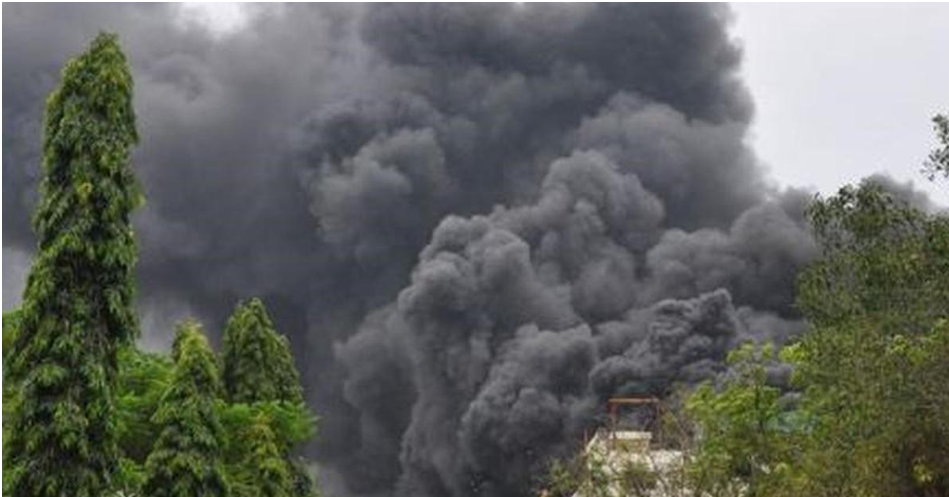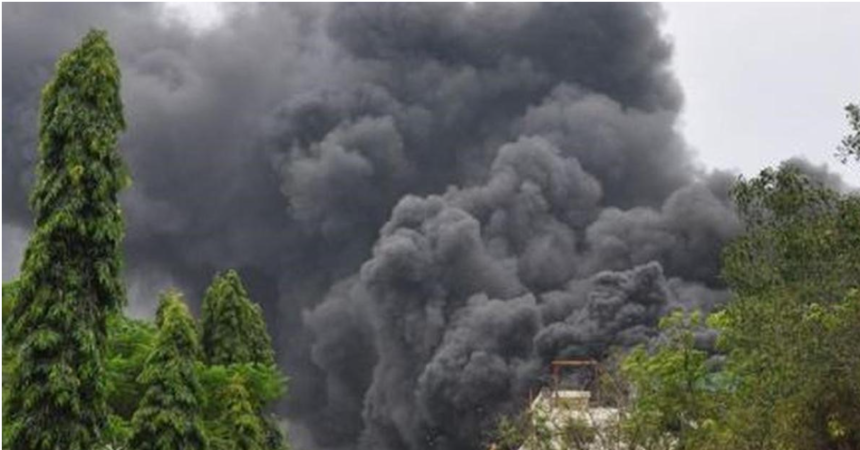Introduction: A Heartbreaking Industrial Disaster in Bharuch
“Tragedy in Gujarat grim industrial accident claimed the lives of four workers at a chemical plant in Gujarat’s Bharuch district after they were exposed to toxic gas. The tragedy unfolded on December 27, 2024, at a factory in Dahej Industrial Estate, a hub for chemical and manufacturing units. The victims were performing maintenance work when they inhaled the fatal fumes.
Police and safety officials have launched an investigation to determine the exact cause of the accident. While the deceased workers’ bodies have been sent for postmortem, the incident raises urgent questions about workplace safety protocols and the broader industrial practices in one of India’s most important chemical hubs.
The Incident: A Routine Task Turns Fatal
The accident occurred during a maintenance operation at the Bharuch chemical plant, where workers reportedly entered a confined area without adequate safety precautions.  For the more information click on this link
For the more information click on this link
Sequence of Events
- Entry into the Confined Space: Four workers entered a tank for cleaning and maintenance work. Unbeknownst to them, the tank contained toxic gas from residual chemical reactions.
- Exposure to Toxic Gas: Within moments, the workers began to show signs of distress. Eyewitnesses reported that they collapsed shortly after exposure.
- Unsuccessful Rescue Attempts: Fellow workers attempted to pull them out, but the confined nature of the space and the presence of toxic fumes complicated rescue efforts.
Police Statement
“The bodies were sent for postmortem, and further probe into the incident is underway,” a senior police official said, adding that preliminary investigations point to the release of a hazardous gas due to improper handling of chemicals.
Tragedy in Gujarat Profiles of the Deceased Workers
The victims have been identified as daily-wage workers employed by a subcontractor at the factory.
- Economic Background: Most of the workers hailed from neighboring villages and supported families through their meager earnings.
- Age and Vulnerability: All were aged between 25 and 40, highlighting the vulnerability of young, unskilled laborers in hazardous industries.
For their families, the tragedy is a devastating loss, both emotionally and financially.
Causes of the Accident: Preliminary Findings
Industrial safety experts and local authorities have begun piecing together the causes of the accident.
Toxic Gas Exposure
Initial reports suggest the release of toxic gases, possibly hydrogen sulfide or other byproducts from chemical residues in the tank.
- Chemical Reactions: Traces of chemicals left in the tank likely interacted, Tragedy in Gujarat releasing toxic fumes.
- Improper Ventilation: Lack of adequate ventilation compounded the buildup of hazardous gases in the confined space.
Safety Negligence
The tragedy has exposed glaring lapses in safety protocols at the plant.
- Absence of Safety Gear: The workers reportedly entered the area without proper protective equipment (PPE), such as gas masks.
- Noncompliance with Standards: Initial observations point to violations of safety protocols mandated by the Factory Act and other labor safety laws.
Workplace Safety in India: A Persistent Issue
The Bharuch tragedy is one among many incidents highlighting unsafe working conditions in India’s industrial sector, Tragedy in Gujarat particularly in chemical manufacturing.
Recurring Accidents
- Frequent Industrial Mishaps: Data reveals that hundreds of workers die annually in accidents at factories across India, with Gujarat often featuring prominently due to its large industrial base.
- Historical Context: Bharuch has witnessed several such incidents in the past, including gas leaks and explosions, raising concerns about the region’s safety compliance.
Safety Violations and Challenges
- Inadequate Enforcement of Laws: Despite stringent labor and safety regulations, poor enforcement allows factories to operate without adequate safeguards.
- Lack of Training: Many workers, particularly contractual laborers, are not adequately trained to handle hazardous materials.
- Substandard Safety Audits: Audits and inspections often fail to identify critical lapses, enabling unsafe practices to persist.
Impact on Families and Communities
The tragedy has left the families of the victims devastated:
- Emotional Toll: The sudden and preventable deaths have caused immense grief, Tragedy in Gujarat with dependents struggling to process their loss.
- Financial Hardship: As sole breadwinners, the deceased workers were critical to their families’ economic stability, leaving them vulnerable to long-term poverty.
Support from Authorities
Local officials have announced compensation packages for the victims’ families, Tragedy in Gujarat though activists argue that these payouts often fall short of adequately supporting bereaved families.
Environmental and Public Health Risks
The release of toxic gas at the chemical unit also raises concerns about potential environmental and public health impacts:
- Immediate Health Hazards: While confined to the plant, Tragedy in Gujarat gas leaks can pose risks to nearby communities, including respiratory issues and skin irritation.
- Long-Term Risks: Persistent chemical residues can contaminate soil and water, Tragedy in Gujarat posing threats to both ecology and human health.
The Need for Stronger Industrial Safety Measures
The Bharuch accident underscores the pressing need for systemic reforms to enhance worker safety across India’s industrial landscape.
Strengthening Regulatory Oversight
- Regular Inspections: Increased frequency of surprise safety audits by state and central agencies.
- Penalties for Violations: Stricter penalties for noncompliance with labor and environmental safety laws.
Training and Awareness
- Worker Education: Ensuring all workers, particularly contractual laborers, Tragedy in Gujarat receive training on safety protocols.
- Mock Drills: Regular safety drills to prepare workers for emergency scenarios.
Improved Technology
- Modern Safety Equipment: Mandating the use of advanced safety gear for hazardous operations.
- Automated Monitoring: Installing sensors to detect gas leaks and other chemical hazards in real time.
Voices of Advocacy: Experts and Activists Weigh In
The tragedy has prompted responses from industrial safety experts, labor activists, Tragedy in Gujarat and public health advocates.
Expert Opinions
- Industrial Safety Experts: They have stressed the need for better safety mechanisms in chemical plants, particularly in high-risk areas such as confined spaces.
- Public Health Professionals: Concerns over long-term exposure to hazardous chemicals have also been raised.
Labor Unions
Worker unions in Gujarat have criticized the factory management for negligence, Tragedy in Gujarat demanding stronger protections for contractual workers who often bear the brunt of such incidents.
Learning from Global Best Practices
Countries like Germany, the United States, and Japan, with significant chemical industries, offer valuable lessons in preventing such tragedies:
- Stringent Compliance Standards: Regular and rigorous enforcement of safety laws.
- Mandatory Worker Safety Training: Comprehensive training for all employees and contractors.
- Advanced Hazard Mitigation: Adoption of real-time monitoring systems and emergency protocols.
India’s industrial hubs, including Tragedy in Gujarat , could benefit immensely from emulating these practices.  For the more information click on this link
For the more information click on this link
Government and Industry Response
Official Statements
The Gujarat government has announced an immediate investigation and promised strict action against those found responsible. State officials have emphasized the importance of adhering to safety regulations.
Factory Management
The chemical plant’s management has expressed regret over the incident, pledging cooperation with authorities. However, Tragedy in Gujarat labor unions remain skeptical of their commitment to genuine reform.
Conclusion: A Call to Action for Safer Workplaces
The tragic deaths of four workers in Bharuch serve as a grim reminder of the persistent challenges in ensuring industrial safety in India. As families grieve their loss, the nation must confront the systemic failures that allow such tragedies to occur.
Strengthening safety protocols, enforcing stricter regulations, and prioritizing worker training are imperative steps to prevent future accidents. Let the voices of the victims and their families inspire collective action to create workplaces where safety is paramount and lives are never needlessly lost. ALSO READ:-“Maha Kumbh 2025: PM Modi Calls for Unity and Banishment of Hate from Society” 2024





